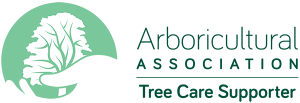Why should I use an ARB Approved Contractor?
Contractors listed in our directory listing have submitted their businesses and their tree work to the Arboricultural Association for assessment and have been found competent to provide arboricultural contracting services to clients.
The Arboricultural Association’s assessment of Approved Contractors is not limited to their knowledge of trees and tree maintenance but also:
- Their understanding and practical application of current arboricultural practice
- Their compliance with legislative requirements of arboricultural contracting
- Their compliance with health and safety requirements of arboricultural contracting (endorsed by the CHAS scheme)
- Their high levels of service to clients through efficient business management.
Each Arboricultural Association Approved Contractor is required to identify a principal or manager who is responsible to the Association for the company’s standards. The standard required by the Association is very high and Approved Contractors are subject to reassessments at regular intervals to ensure that standards are maintained. The standards themselves are regularly reviewed to ensure that they reflect contemporary arboricultural research findings, legislative and health and safety requirements, business practices and customer expectations.
The Association requires that Approved Contractors within this directory must hold insurances to levels appropriate to liabilities that their work may generate, and in all cases Public Liability insurance to a minimum of £5,000,000 with a maximum excess of £250 in any one incident. Employers’ Liability insurance (as applicable) to an appropriate level commensurate with the size of the business is needed. Professional Indemnity insurance, to a minimum of £500,000, may also be required if the contractor provides independent written advice.
Inclusion of a contractor within this directory should not be regarded as proof of current insurance cover. Before entering into any contractural agreement clients should satisfy themselves that appropriate insurance is in place by asking for evidence from the contractor and/or their broker.
What are the typical services of an arboricultural contractor?
Services typically required of an arboricultural contractor are:
- Tree maintenance operations including pruning, and related works to relevant British Standards (see our Tree Work Terminology page)
- Tree planting operations and aftercare/establishment programmes
- Tree felling, including dismantling of dangerous trees or trees in confined spaces
- Advice and guidance on the above.
In addition some contractors may undertake pest and disease (‘P&D’) identification and control, bracing, soil decompaction and amelioration, tree fertilisation, mulching and other operations, including hedge trimming, fruit tree pruning, veteran tree management. However, only those listed above are covered by the ‘ARB Approved Contractor Scheme’
These services are usually performed to an agreed specification which may come from:
- The contractor after discussion with the client, or
- A third party such as a Consultant employed, or
- The Local Authority Tree Officer if a Tree Preservation Order etc. is in place.
In either case it is prudent for clients to obtain a written specification for the work and to agree the specification and price prior to commissioning the contractor.
Further information:
The Arboricultural Association's official guide to choosing your tree surgeon
A brief guide to tree work terminology and definitions
![]() 24/11/2015 Last Modified: 08/11/2018
24/11/2015 Last Modified: 08/11/2018
WHAT’S IN A WORD?
Tree pruning may be necessary to maintain a tree in a safe condition, to remove dead branches, to promote growth, to regulate size and shape or to improve the quality of flowers, fruit or timber. Improper pruning can lead to trees becoming unsightly, diseased and/or potentially dangerous.
It is important that clients understand the basic terms commonly used to describe tree work operations so that they can ask for what they want or understand what the arboriculturist is recommending. Did you know, for example, that a ‘crown thin’ will not reduce the height of the tree? Nor will a ‘crown lift to 4m’.
The three main pruning options are shown below, and after that a glossary of other terms that you may find helpful. These are very general summaries and the Arboricultural Association can provide more detailed guidance by leaflets and other publications.
The British Standards most relevant to arboricultural work are:
BS3998: 2010 Recommendations for Tree Work and
BS5837: 2012 Trees in Relation to Design, Demolition and Construction - Recommendations.
A word of caution: many trees are legally protected. Felling or even just pruning a protected tree without permission from your Local Planning Authority may be a criminal offence.
Always check for Tree Preservation Orders or Conservation Area restrictions with your local council’s Tree Officer and/or Planning Department before carrying out any works.
Main Pruning Definitions
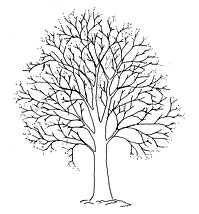
Crown Thin
Crown thinning is the removal of a portion of smaller/tertiary branches, usually at the outer crown, to produce a uniform density of foliage around an evenly spaced branch structure. It is usually confined to broad-leaved species. Crown thinning does not alter the overall size or shape of the tree. Material should be removed systematically throughout the tree, should not exceed the stated percentage and not more than 30% overall. Common reasons for crown thinning are to allow more light to pass through the tree, reduce wind resistance, reduce weight (but this does not necessarily reduce leverage on the structure) and is rarely a once-only operation particularly on species that are known to produce large amounts of epicormic growth.
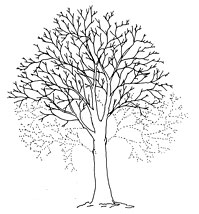
Crown Lift or Crown Raising
Crown lifting is the removal of the lowest branches and/or preparing of lower branches for future removal. Good practice dictates crown lifting should not normally include the removal of large branches growing directly from the trunk as this can cause large wounds which can become extensively decayed leading to further long term problems or more short term biomechanical instability. Crown lifting on older, mature trees should be avoided or restricted to secondary branches or shortening of primary branches rather than the whole removal wherever possible. Crown lifting is an effective method of increasing light transmission to areas closer to the tree or to enable access under the crown but should be restricted to less than 15% of the live crown height and leave the crown at least two thirds of the total height of the tree. Crown lifting should be specified with reference to a fixed point, e.g. ‘crown lift to give 5.5m clearance above ground level’.
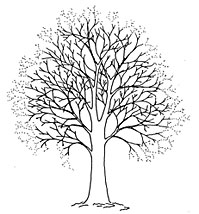
Crown Reduction
The reduction in height and/or spread of the crown (the foliage bearing portions) of a tree. Crown reduction may be used to reduce mechanical stress on individual branches or the whole tree, make the tree more suited to its immediate environment or to reduce the effects of shading and light loss, etc. The final result should retain the main framework of the crown, and so a significant proportion of the leaf bearing structure, and leave a similar, although smaller outline, and not necessarily achieve symmetry for its own sake. Crown reduction cuts should be as small as possible and in general not exceed 100mm diameter unless there is an overriding need to do so. Reductions should be specified by actual measurements, where possible, and reflect the finished result, but may also refer to lengths of parts to be removed to aid clarity, e.g. ‘crown reduce in height by 2.0m and lateral spread by 1.0m, all round, to finished crown dimensions of 18m in height by 11m in spread (all measurements approximate.)’. Not all species are suitable for this treatment and crown reduction should not be confused with ‘topping’, an indiscriminate and harmful treatment.
Illustrations courtesy of European Arboricultural Council.
The importance of correct pruning cuts
Every pruning cut inflicts a wound on the tree. The ability of a tree to withstand a wound and maintain healthy growth is greatly affected by the pruning cut – its size, angle and position relative to the retained parts of the tree. As a general rule branches should be removed at their point of attachment or shortened to a lateral which is at least 1/3 of the diameter of the removed portion of the branch, and all cuts should be kept as small as possible. Examples of correct pruning cuts are shown as follows.
Showing sequence of removal to avoid damage to the retained parts
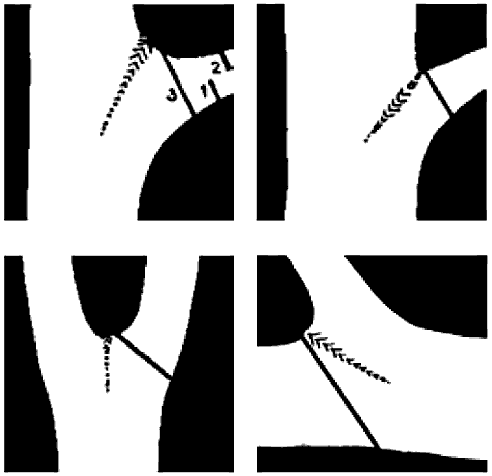
Diagram 2 – examples of correct pruning cuts. Drawings courtesy of European Arboricultural Council.
Other useful terms associated with tree work
Adaptive growth
An increase in wood production in localised areas in response to a decrease in wood strength or external loading to maintain an even distribution of forces across the structure.
Adventitious/epicormic growth
New growth arising from dormant or new buds directly from main branches/stems or trunks.
Bracing
Bracing is a term used to describe the installation of cables, ropes and/or belts to reduce the probability of failure of one or more parts of the tree structure due to weakened elements under excessive movement.
Branch bark ridge and collar
See diagram 3 section 3. Natural features of a fork or union that may or may not be visually obvious. Neither the branch bark ridge nor collar should be cut.
Callus
Undifferentiated tissue initiated as a result of wounding and which become specialised tissues of the repair over time.
Cavity
A void within the solid structure of the tree, normally associated with decay or deterioration of the woody tissues. May be dry or hold water, if the latter it should not be drained. Only soft decomposing tissue should be removed if necessary to assess the extent. No attempt should be made to cut or expose living tissue.
Co-dominant stems
Two or more, generally upright, stems of roughly equal size and vigour competing with each other for dominance. Where these arise from a common union the structural integrity of that union should be assessed.
Coppicing
The cutting down of a tree within 300mm (12in) of the ground at regular intervals, traditionally applied to certain species such as Hazel and Sweet Chestnut to provide stakes etc.
Crown
The foliage bearing section of the tree formed by its branches and not including any clear stem/trunk.
Deadwood
Non-living branches or stems due to natural ageing or external influences. Deadwood provides essential habitats and its management should aim to leave as much as possible, shortening or removing only those that pose a risk. Durability and retention of deadwood will vary by tree species.
Decline
When a tree exhibits signs of a lack of vitality such as reduced leaf size, colour or density.
Dieback
Tips of branches exhibit no signs of life due to age or external influences. Decline may progress, stabilise or reverse as the tree adapts to its new situation.
Dormant
The inactive condition of a tree, usually during the coldest months of the year when there is little or no growth and leaves of deciduous trees have been shed.
Drop Crotching
Shortening branches by pruning off the end back to a lateral branch which is at least 1/3 of the diameter of the removed branch.
Fertilising
The application of a substance, usually to the tree’s rooting area (and occasionally to the tree), to promote tree growth or reverse or reduce decline. This will only be effective if nutrient deficiency is confirmed. If decline is the result of other factors such as compaction, physical damage, toxins etc., the application of fertiliser will not make any difference.
Formative pruning
Minor pruning during the early years of a tree’s growth to establish the desired form and/or to correct defects or weaknesses that may affect structure in later life.
Fungi/Fruiting bodies
A member of the plant kingdom that may colonise living or dead tissues of a tree or form beneficial relationships with the roots. The fruiting body is the spore bearing, reproductive structure of that fungus. Removal of the fruiting body will not prevent further colonisation and will make diagnosis and prognosis harder to determine. Each colonisation must be considered in detail by a competent person to determine the long term implications of tree health and structure when considered alongside the tree species, site usage etc.
Lopping and Topping
Generally regarded as outdated terminology but still included as part of Planning legislation. Lopping refers to the removal of large side branches (the making of vertical cuts) and topping refers to the removal of large portions of the crown of the tree (the making of horizontal cuts, generally through the main stems). Often used to describe crude, heavy-handed or inappropriate pruning.
Painting or Sealing
Covering pruning cuts or other wounds with a paint, often bitumen based. Research has demonstrated that this is not beneficial and may in fact be harmful. On no account should timber treatments be used as these are definitely harmful to living cells.
Pollard
The initial removal of the top of a young tree at a prescribed height to encourage multistem branching from that point, traditionally for fodder, firewood or poles. Once started, it should be repeated on a cyclical basis always retaining the initial pollard point, or bolling as it becomes known.
Retrenchment pruning
A form of reduction intended to encourage development of lower shoots and emulate the natural process of tree aging.
Root pruning
The pruning back of roots (similar to the pruning back of branches). This has the ability to affect tree stability so it is advisable to seek professional advice prior to attempting root pruning.
Topping
See Lopping and Topping.
Vitality
The degree of physiological and biochemical processes (life functions) within an individual, group or population of trees.
Topics:
adaptive growth, bracing, callus, cavity, coppicing, crown, crown lifting, crown raising, crown reduction, crown thinning, deadwood, definitions, dieback, glossary, lopping, terminology, topping
Find a Professional
If you need advice or tree management services - always use an Arb Approved Contractor (Tree work) or a Registered Consultant (Arboricultural consultant).
What training & qualifications should tree workers have?
Legal Requirements
The Health and Safety at Work etc Act 1974 and the Management of Health and Safety at Work Regulations 1999 place general duties on employers and the self-employed to provide health and safety information and training.
Provision and Use of Work Equipment Regulations 1998 place more specific duties on employers and the self-employed to ensure that any person who uses or supervises the use of work equipment has had adequate training.
What do they require?
Legislation requires that training is provided when first starting work, exposure to new or increased risks occurs or for refresher purposes for high risk activities or non-frequently used skills. In particular, the Approved Code of Practice accompanying PUWER, 1998 requires:
- Drivers of self-propelled machines (including any attachments or towed equipment) to have received adequate training;
- Anyone working with chainsaws to hold a Certificate of Competence award or national competence award relevant to the work they undertake.
Training should be provided during normal working hours and at no cost to the employee.
Provision of Training
Training is commonly provided by a combination of in-house, college and specialist training depending upon the nature of the task involved and the required final outcome, i.e. certificates of competence etc. Where training is to be consolidated through work-based experience prior to testing the trainee should hold a recognised certificate of training and be adequately supervised by a competent person holding relevant certificates.
Due to the high risk nature of arboricultural operations it is strongly recommended that specialist instructors carry out required training.
Certification
Independent assessment is required for all professional users of chainsaws to ensure that the initial training has been fully understood and skills developed. For most advanced skills, assessment should be independent of any training (however some additional training may include integrated assessment). All such training and successful assessment will result in the award of a nationally recognised Ofqual qualification, certificate of competence, or licence to practice.
For less risky operations such as the use of woodchippers, stump grinders, MEWPS etc training and certification may be combined in an Integrated Training and Assessment package (ITA).
Any in-house training must be to the same level as the above and adequate records must be kept to demonstrate how this has been achieved.
Nationally recognised certificates of competence/licence to practice are a straightforward method of demonstrating skills for a particular operation without the need for further detailed records.
Holders of such certificates do not generally require close supervision, however ongoing monitoring of operating standards by the employer will be required, and should be recorded. It is unrealistic to expect operators who have passed certificates of competence to achieve full output until they have consolidated the skills learned.
Refresher Training
Regular refresher training should be completed by all professional users in order to maintain skills and knowledge. This will normally be every 5 years. Those who undertake operations infrequently may need more regular refresher training, every 2-3 years.
Further information:
- AA Health and Safety Package – AA
- Safe use of work equipment. Approved Code of Practice and guidance – HSE publications
- FISA 805 Training and Certification.
Are there any times of year when tree works should not be undertaken?
Ideally, tree works should not be undertaken during the springtime period, when the 'sap is rising' to enable the leaves to flush (come out) and photosynthesis to begin, and during the autumn, when the tree is drawing nutrients back into itself from the leaves as they go brown.
If works are undertaken in the spring then the tree may become more vulnerable to pest and disease attack. If works are carried out in the autumn then the tree will not be able to get all the nutrients that it needs for the next spring and the tree may be put under unnecessary stress, increasing the likelihood of disease.
Outside these periods most trees can be pruned at any time of the year, with a few exceptions:
Cherry, Plum and related trees (Prunus species) should be pruned soon after flowering to reduce the risk of bacterial infection.
Maple, Birch, Beech and Walnut should be pruned in leaf or just after leaf fall and Magnolia in high summer to avoid ‘bleeding’ (exuding sap), which, although not considered damaging, can be unsightly.
If possible, pruning should be avoided when recovery may be impaired, for example during a period of physiological stress following previous tree work or construction-related damage or during seasonal weather extremes such as drought or extended heavy frost.
Topics:
bleeding, fruit trees, pruning, time of year
Find a Professional
If you need advice or tree management services - always use an Arb Approved Contractor (Tree work) or a Registered Consultant (Arboricultural consultant)
Do you need any form of training before you can set out traffic management signs and cones on a public highway in order to carry out tree works?
We strongly advise that tree work contractors undertake appropriate training for all activities they carry out in order to comply with legislation. In this case the New Roads and Street Works Act along with relevant guidance such as the Safety at Street Works and Road Works Code of Practice would apply. Additionally, all tree work falls under the general provisions of the Health and Safety at Work Act which means that others should not be put at risk by tree work operations.
Topics:
code of practice, road management, safety, traffic management, training
Find a Professional
If you need advice or tree management services - always use an Arb Approved Contractor (Tree work) or a Registered Consultant (Arboricultural consultant)
